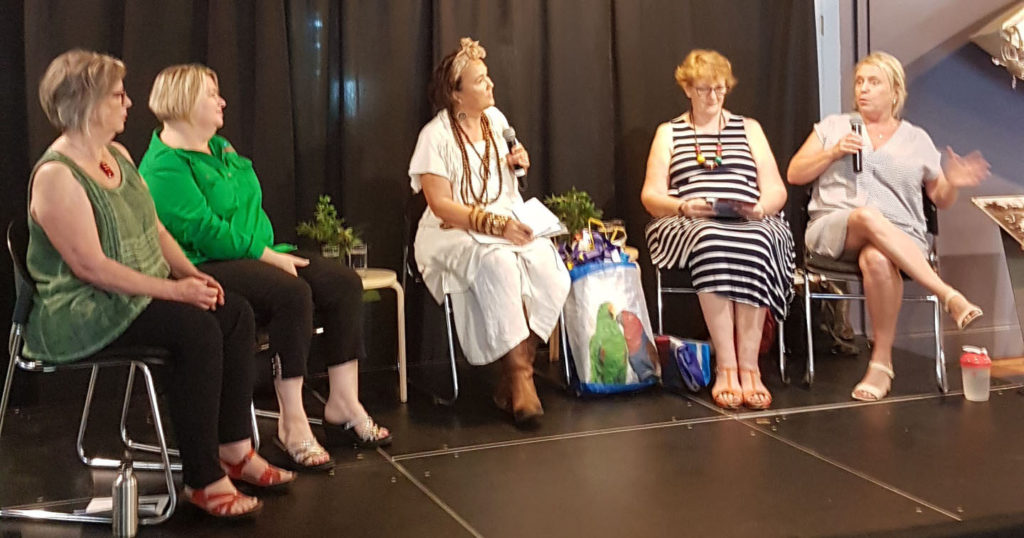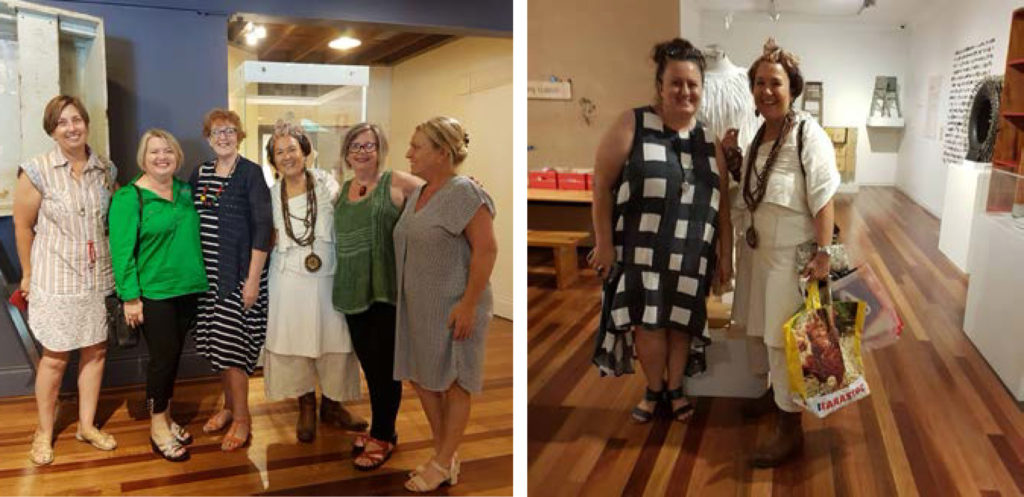Buy local and eat in season are simple ways to support local farmers. Most of my career has been in agriculture, so it was great to be invited by Moreton Bay Regional Council to moderate this conversation about community supported agriculture with these awesome women speaking the Pine Rivers Heritage Museum at the weekend.

Jenni Guse, Tash Johnston, author Jane Milburn, Flora Bradley and Amanda Schultz talk local farming
Amanda Schultz, from Luvaberry strawberry farm in Wamuran talked about her own war on waste with innovative products (strawberry dust) and marketing (carpark parties).
Flora Bradley, who leads community group, Ag Bags for Rural Communities, spoke about her commitment to upcycling spent feed bags into shopping bags and donating all funds to Drought Angels.
Tash Johnston, founding director Drought Angels, talked about how she came to be changing lives by supporting farmers at risk and at times of need.
And Jenni Guse, Chair of the Board of Millen Farm at Samford, outlined the future potential for this community-supported farm dedicated to permaculture and just 45 minutes from Brisbane CBD.
Thanks Leanne Kelly for having the vision to create this Conversation Starter series at Pine Rivers Heritage Museum to highlight how being resourceful and using what we have around us (aka making do) makes a difference.
It was inspiring to hear these personal stories, to talk about where food comes from and envisage ways that it we can support farmers to keep farming. Currently 55 per cent of the world’s population lives in cities, but by 2050 that will rise to 68 per cent according to the United Nations. Making best use of farming expertise and arable land close to cities needs to be a priority.
On Saturday, I was also supporting local farmers by wearing an outfit I made from local fibre. In this case, cotton grown in St George by Australian Super Cotton farmers Glenn Rogan and his daughter Rebecca that was processed into fabric by Meriel Chamberlin of Full Circle Fibres. Teamed with Australian-made Harold Boots that I’ve owned for more than 15 years). It was also good to have another glimpse of the Making Do exhibition at the museum, which includes my original history skirt that is on the cover of my book Slow Clothing: finding meaning in what we wear.
